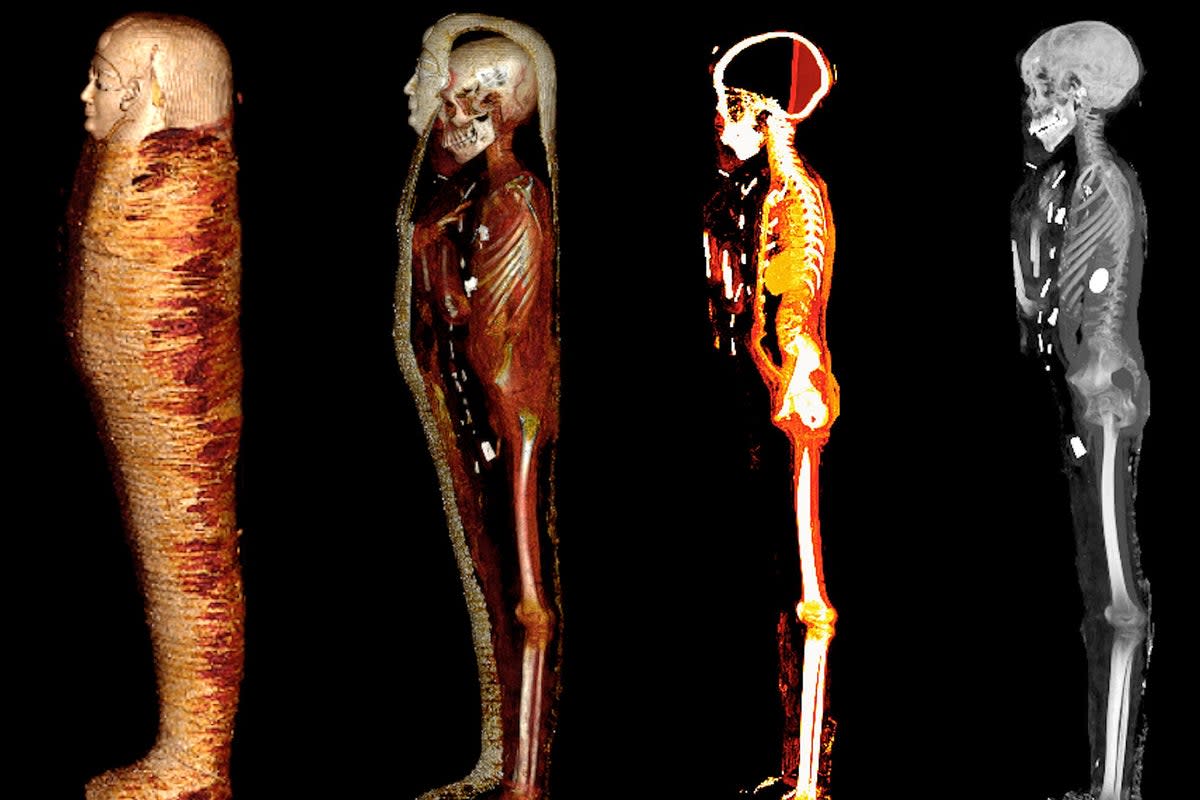Mummified Egyptian ‘golden boy’ was buried with 49 amulets and other treasures, scans show

- Oops!Something went wrong.Please try again later.
Scientists have unwrapped the mummified body of a teenage boy to find that wealthy ancient Egyptians were given scores of amulets when they were mummified in the hope it would speed their journey to the afterlife.
The study said that the boy was about 4ft 2in tall and is believed to have died of natural causes.
Researchers used CT (computerized tomography) scans to make the discovery.
“Here we show that this mummy’s body was extensively decorated with 49 amulets, beautifully stylised in a unique arrangement of three columns between the folds of the wrappings and inside the mummy’s body cavity,” the study’s first author Dr Sahar Saleem from Cairo University was quoted as saying by PA.
“These include the Eye of Horus, the scarab, the akhet amulet of the horizon, the placenta, the Knot of Isis and others.
“Many were made of gold, while some were made of semi-precious stones, fired clay or faience,” she said.
Ancient Egyptians believed in the idea of an afterlife where entry was possible only if people undertook a perilous journey through the underworld before a final judgment.
Researchers said that the teen boy whose mummified body was unwrapped wore a gilded head mask, a pectoral cartonnage that covered the front of his torso, and a pair of sandals.
According to ancient Egyptian funerary text The Book of the Dead, the deceased had to wear white sandals and be pious and clean before reciting its verses.
"The sandals were probably meant to enable the boy to walk out of the coffin. According to the ancient Egyptians' ritual Book of The Dead, the deceased had to wear white sandals to be pious and clean before reciting its verses," said Ms Saleem.
The mummy’s outer surface had fern garlands as ancient Egyptians believed flowers and plants had sacred and symbolic meanings.
A golden tongue leaf was placed inside his mouth to make sure he could speak in the afterlife.
Researchers also found an Isis Knot enlisted the power of the goddess in the protection of the body and a right-angle amulet that was meant to bring balance and levelling, and double falcon and ostrich plumes represented the duality of spiritual and material life.
“Their purpose was to protect the body and give it vitality in the afterlife,” Ms Saleem said.
The mummy found in 1916 at a cemetery is believed to have been used between approximately 332 and 30 BCE in Nag el-Hassay, southern Egypt.
It had been stored unexamined in the basement of the Egyptian Museum in Cairo.
(Additional reporting by agencies)

